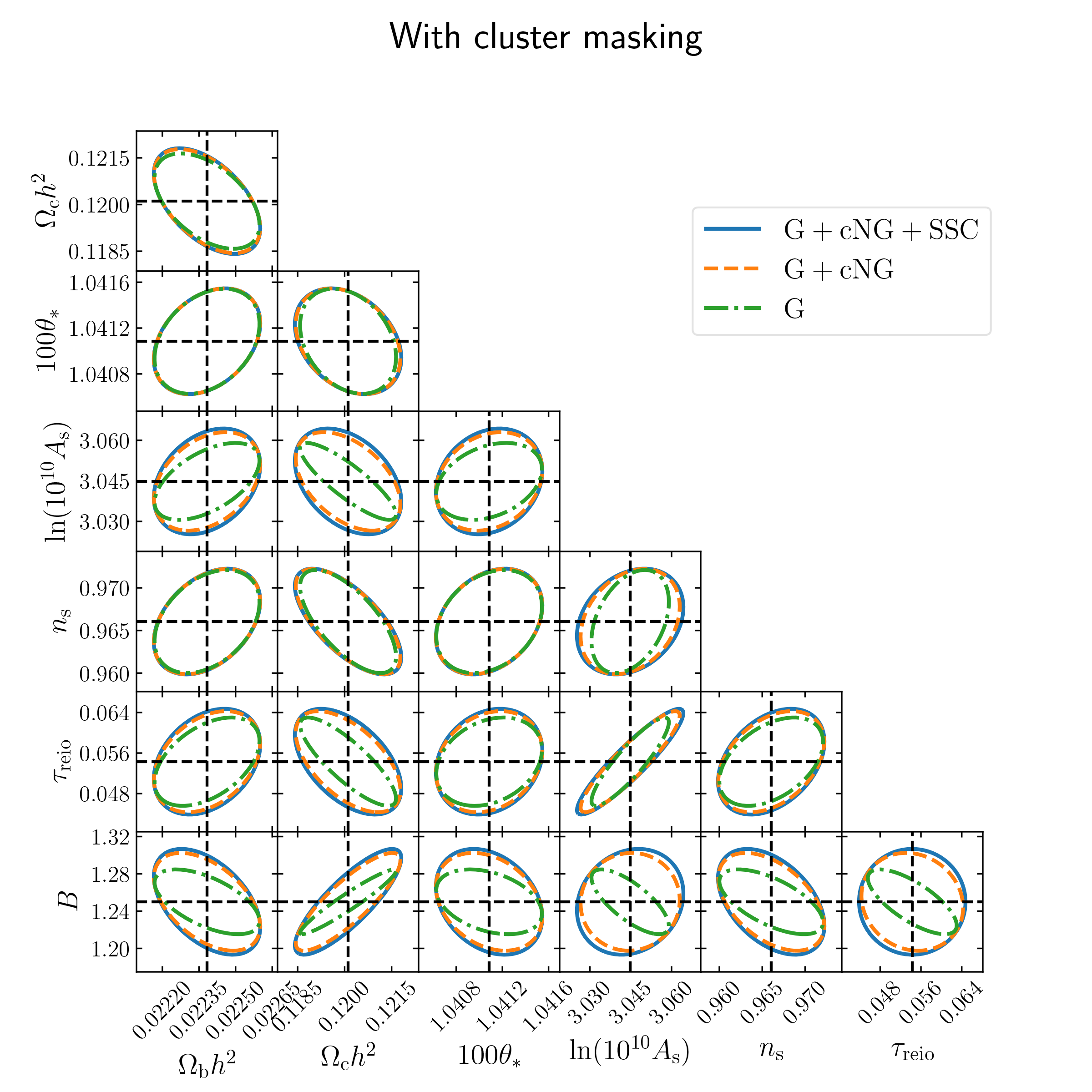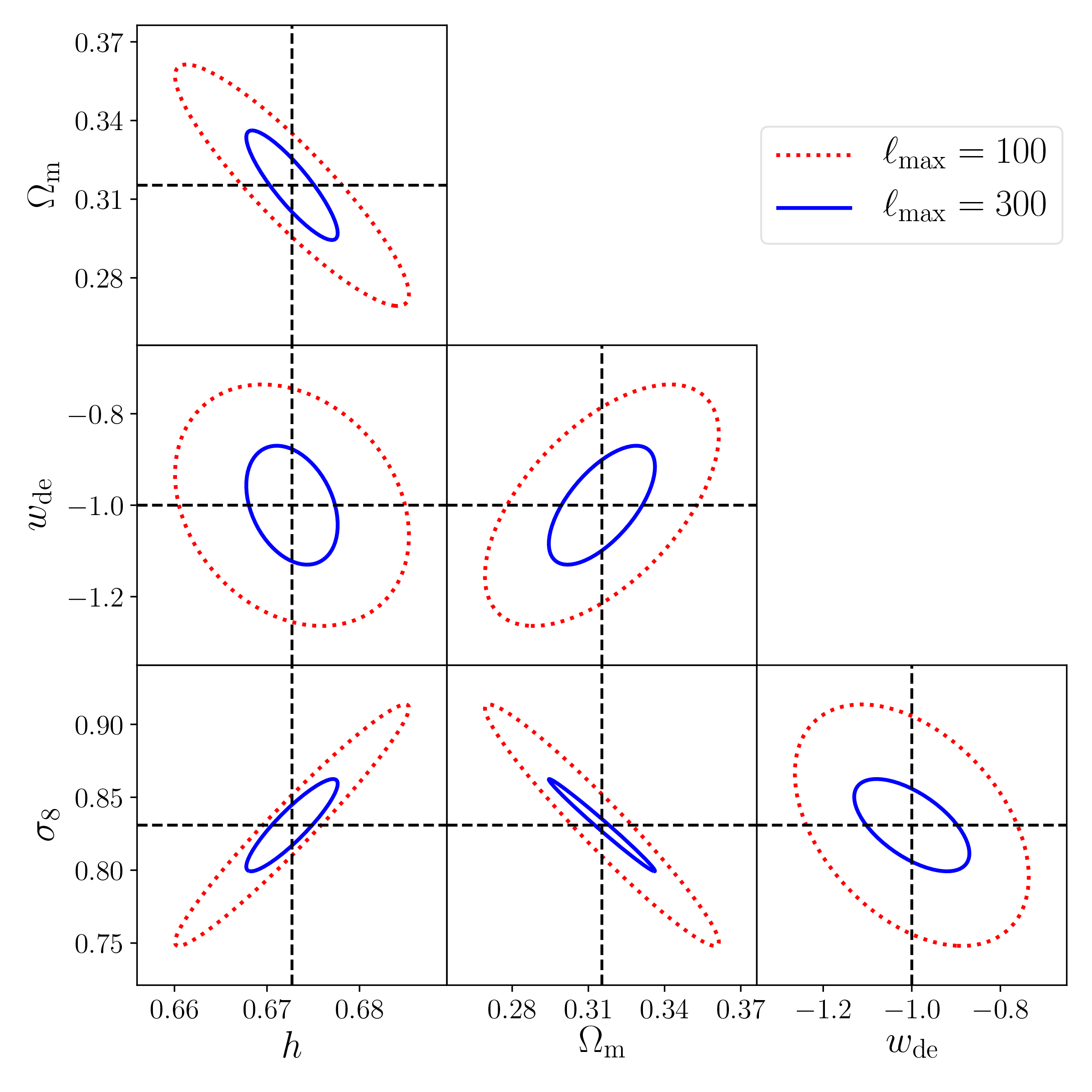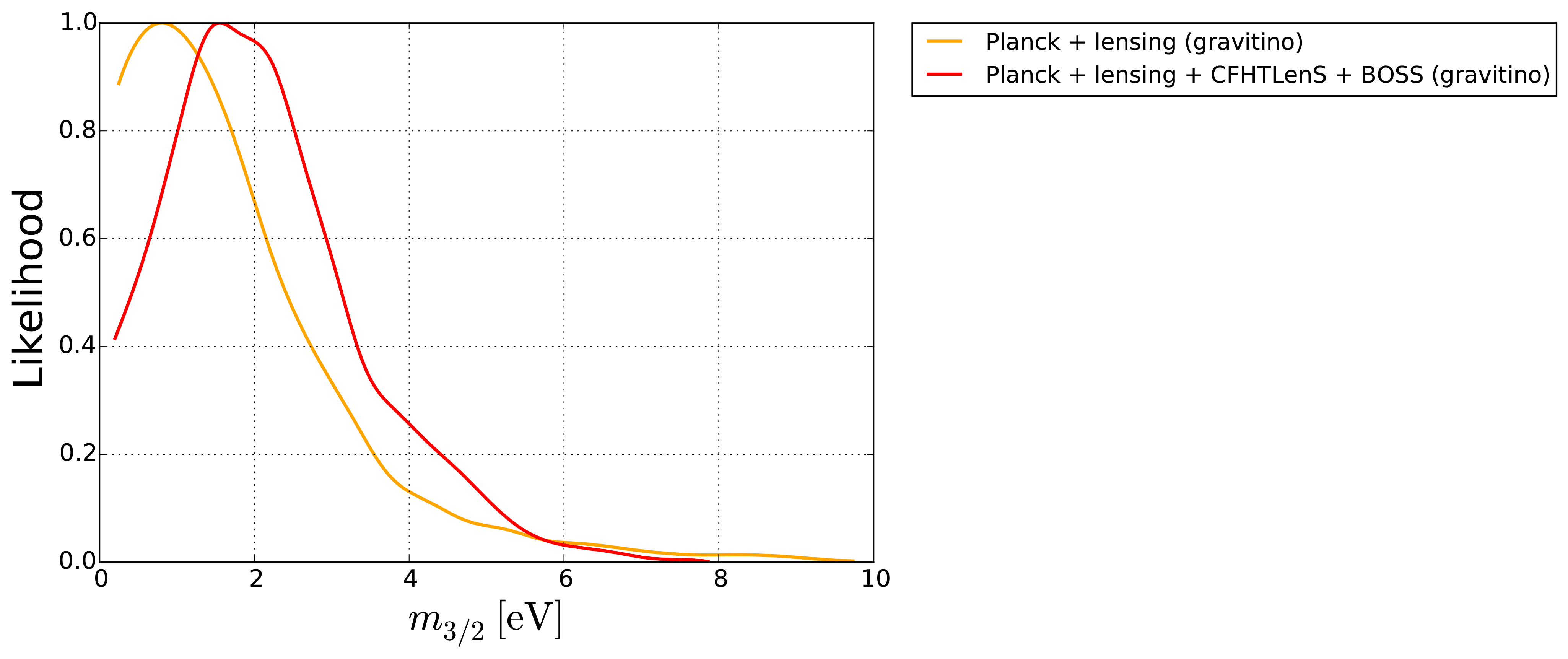Super-sample covariance of the thermal Sunyaev-Zel'dovich effect
The power spectrum of the thermal Sunyaev-Zel'dovich (tSZ) effect is a powerful probe into
the matter fluctuation in the Universe and thermodynamic properties of the intra-cluster medium.
In the statistical analysis with the power spectrum, the covariance of the power spectrum
determines the significance of the measurement and errors on inferred parameters.
Hence, accurate estimation of the covariance matrix is an important part
of the tSZ power spectrum measurement.
It is common that simulations are used to estimate the covariance,
but the simulated volume is limited and the Fourier mode beyond the simulation length scale
is missing. This missing mode contributes to the covariance matrix as an additional source of variance.
This additional component is called as super-sample covariance (SSC).
We quantify the SSC for the power spectrum of tSZ effect based on halo model.
Furthermore, we also investigate how masking nearby clusters,
which are dominant source of sample variance, affects the SSC.
We have shown that masking galaxy clusters enhances the signal-to-noise ratio
but the relative fraction of the SSC increases because it is less sensitive to such clusters.
For the upcoming tSZ analysis, the SSC has to be taken into account for accurate estimation of
the covariance matrix.

Cross-correlation between gravitational wave sources and weak lensing
The compact objects, which are sources of gravitational wave (GW), form in the dense regions,
and thus it is expected that the distribution is correlated with large-scale structures.
The cross-correlation between large-scale structures and the distribution of GW sources
can be useful to explore the expansion history of the Universe
and the environment of GW source forming regions.
However, it is very challenging to determine the source redshift
due to the difficulty of identification of electro-magnetic counterpart of GW sources.
Instead, I propose a novel method to extract the redshift information of GW sources.
By cross-correlating the GW source distribution with WL,
we can selectively extract correlation between WL and GW sources for given redshift ranges
with tomography technique.
I have demonstrated through this cross-correlation,
the Hubble parameter is tightly constrained
and can investigate Hubble parameter tension by providing measurements at high redshifts.

Constraints on the mass of light gravitino with weak lensing
The light gravitino is supersymmetric partner of gravtion and
one of candidates of dark matter particle
because it is neutral and stable.
Since light gravitino is thermally produced in early Universe,
it has finite velocity dispersion, and thus it is classified as warm dark matter.
The light gravitino dissipates small-scale structures at late-time Universe,
and the trail is observed as the suppression of power spectrum,
which can be measured through WL.
We obtain the constraint on
the mass of light gravitino < 4.7 eV (95%)
from WL of cosmic microwave background (CMB) measured by Planck
and cosmic shear by CFHTLenS,
which is the tightest constraint on the light gravitino mass to date.
